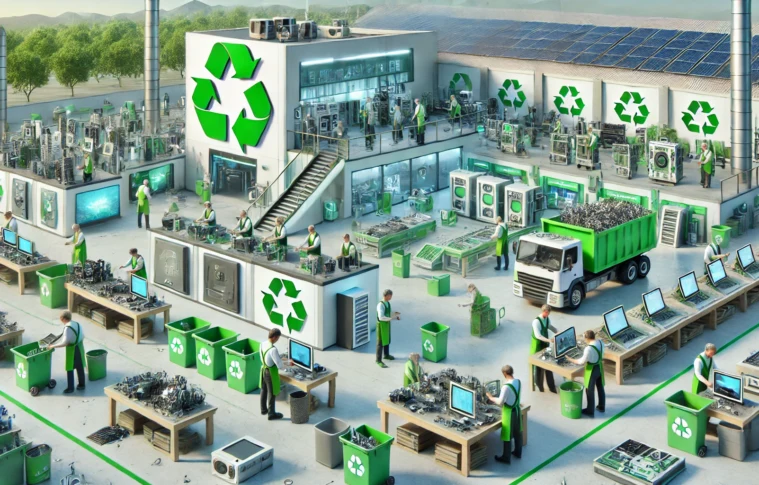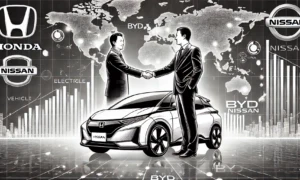Introduction The transition to a circular economy has been a game changer for businesses seeking sustainability and innovation. In this case study, we will explore how Company X, a manufacturer in the electronics sector, successfully turned its waste streams into valuable revenue-generating assets. By implementing sustainable practices, Company X not only reduced its environmental footprint but also unlocked new sources of income that contributed to its long-term growth.
Background Company X was a well-established player in the electronics industry, specializing in the production of consumer gadgets such as smartphones and laptops. However, like many companies in this sector, it faced mounting pressure to address its environmental impact, particularly concerning the disposal of electronic waste (e-waste). A large proportion of its old inventory, production scrap, and returned products were sent to landfills, creating a negative environmental impact and contributing to the growing global e-waste crisis.
The company recognized that traditional waste management was not only unsustainable but also an untapped opportunity for growth. To address this challenge, Company X made a bold decision to pivot to circular economy practices, aiming to minimize waste and maximize the use of resources throughout its supply chain.
The Circular Economy Transition
- E-Waste Collection & Refurbishment Company X partnered with certified e-waste recycling companies to collect discarded electronics from consumers and businesses alike. They set up collection points and incentivized customers with discounts on new products in exchange for their old devices. The returned products were either refurbished or disassembled to recover valuable components, such as gold, copper, and lithium.
By investing in a dedicated refurbishment division, the company was able to repair, upgrade, and resell old devices, effectively extending the lifecycle of its products. This move turned a potential waste stream into a profitable revenue channel. Furthermore, this initiative also strengthened customer loyalty, as consumers appreciated the company’s commitment to sustainability. - Material Recovery and Repurposing In addition to refurbished devices, Company X invested in the recovery of rare earth materials from e-waste. Components like circuit boards, batteries, and plastic casings were processed to extract precious metals and materials that could be reused in the manufacturing of new products.
This move not only provided Company X with a low-cost supply of raw materials but also allowed them to reduce dependence on mining operations, which are resource-intensive and environmentally damaging. By creating a closed-loop system, Company X significantly lowered its production costs and created a new income stream from the resale of recovered materials to other manufacturers. - Upcycling Waste into New Products Another key element of the transition was the company’s focus on upcycling production scrap. Materials that were once deemed unusable, such as plastic trimmings and broken parts, were transformed into new products. Company X introduced a line of sustainable accessories made from upcycled plastics, such as phone cases and laptop stands. This initiative not only generated revenue but also helped reduce the company’s overall waste footprint.
- Sustainability as a Marketing Strategy Company X also saw an opportunity to leverage its commitment to the circular economy in its marketing campaigns. By highlighting their use of recycled materials, refurbished devices, and environmentally-friendly processes, the company attracted eco-conscious consumers who were willing to pay a premium for sustainable products. The marketing strategy emphasized the importance of making responsible purchasing decisions and created a strong brand association with sustainability.
Impact and Results
- Revenue Growth: The transition to a circular economy opened up multiple new revenue streams. Refurbished devices and recovered materials became significant sources of income, increasing the company’s profitability without relying solely on traditional product sales.
- Cost Reduction: By recycling and repurposing materials, Company X cut costs related to raw material procurement and waste disposal. This also reduced its dependence on external suppliers, creating more resilient supply chains.
- Brand Reputation: As the company marketed its sustainability efforts, it gained a competitive edge in the marketplace. Consumers and investors increasingly valued its commitment to the environment, which led to greater market share and increased brand loyalty.
- Environmental Benefits: Over time, Company X successfully reduced its carbon footprint, decreased the amount of waste sent to landfills, and contributed to the broader global efforts to combat e-waste. This transformation played a part in mitigating the environmental impact of the electronics industry.
Conclusion Company X’s transition to a circular economy model is a prime example of how businesses can not only become more sustainable but also unlock new sources of revenue. By transforming waste into value, the company not only gained financial benefits but also improved its brand reputation and contributed positively to the environment. The case of Company X demonstrates that sustainability and profitability can go hand in hand when companies embrace the principles of a circular economy.



